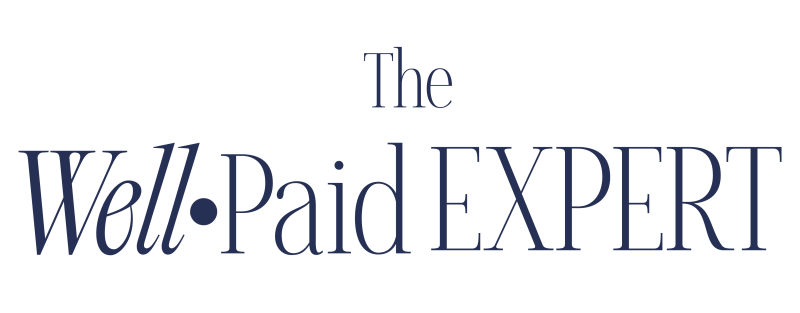Which well-paid expert are you?
Take this quick (60-second) quiz to find out which type of well-paid expert you are, and what steps to take to make that dream a reality.

Discover the Power of LinkedIn: 4 Game-Changing Steps That Skyrocketed My Business!
LinkedIn.
It’s like that old, reliable friend who’s always been there, but you never really gave them much thought.
It’s been around for so long that I joke it was invented by Abraham Lincoln to recruit Union soldiers in the Civil War.
But all jokes aside, my journey with understanding the power of LinkedIn has been a rollercoaster ride, and I’m here to share that story with you.
(By the way, before we get too far into this, let’s connect on LinkedIn!)
If you’d prefer to watch the video instead of reading the post, you can do that here:
My Initial Encounter with LinkedIn
It was November 2008. I’d just moved home to Portland, Oregon, from Washington, DC, and I’d taken a job as a recruiter in the hospitality industry. My job was to find hotels and resorts that might need new directors of sales and match them with people who were qualified to fill that role.
As it turns out, high-end hospitality was one of the first industries to suffer the consequences of the looming global recession, in retrospect.
But I didn’t know that when I’d packed my life and started a new job.
One where I needed to make between 80 and 100 calls per day.
Sidenote: that job was doomed from the beginning, but it taught me how to make phone calls to business professionals without fear, a skill I use to this day.
My approach to LinkedIn at the time was far from strategic. I was using it to augment my phone calls and try to get one step closer to the sale.
I’m sure I went about it all wrong, but honestly?
The recession of 2008 and 2009 swept away any semblance of a strategy I had for LinkedIn.
The global recession was a force no LinkedIn strategy could outpace.
The Evolution of My Relationship with LinkedIn
After the recession, I moved on to work for a software company that helped farmers market managers do their jobs better. LinkedIn didn’t seem like the right fit for that role, so I left it alone.
I found my last corporate job in 2012 with the help of a friend who spruced up my resume. But during the interview, someone pointed out that while my resume looked great, my LinkedIn profile was lacking. I laughed it off, but they were right.
I’d used LinkedIn so far the only ways I thought I could: as a tool for recruiting and as a tool to help me land a new job.
This pattern of using and ignoring LinkedIn might sound familiar to many of you.
I used to be able to tell which of my friends was about to leave their job based on how active they’d been on LinkedIn.
I never thought of LinkedIn as a viable option for anything beyond job hunting. And endorsing my friends for ridiculous things, like sword fighting (which no one in my circles is remotely qualified to do).
A Career Path Less Traveled
My career path has not been linear.
I started out in 2011 writing a personal finance blog. Then, in 2014, I joined forces with a couple of business partners and helped build the Stacking Benjamins podcast to profitability. Along the way, I experimented with different ventures, wrote blogs, explored affiliate income, and experienced the highs and lows of entrepreneurship.
The last significant pivot in my career was in 2022 when I shut down a content marketing agency.
My business partner and I decided to go our separate ways as our passion for content marketing had waned and our referrals had dried up.
This decision led me to a crossroads. I realized I didn’t want to continue with content marketing.
Instead, I wanted to serve a different industry. In a new capacity.
The Revelation: LinkedIn as a Powerful Tool
I was starting from scratch, with no traffic, no leads, no referrals. It was then that someone in a group program I was in mentioned their success with LinkedIn. Intrigued, I watched a video they created and thought, “Hey, I can do something similar!” And that’s when I started building out a LinkedIn strategy.
What I found was how easy it was to get traction on LinkedIn.
It was a breath of fresh air.
I hadn’t been publishing content on LinkedIn, nor was I getting anyone’s attention on the platform.
However, as soon as I started implementing a strategic approach, I was overrun with calls.
It was amazing.
I went from having no calls to having up to 20 calls a week consistently.
My four-step approach to leveling up my LinkedIn

I broke down my LinkedIn strategy into four parts:
Profile Optimization
This is all about making your profile shine. And no, don’t use that wedding picture where you’ve cut out your brother because it’s the best picture you have from the last five years.
The overarching strategy I’m using (and teaching!) is to make new connections, show up as a human, and drive some of them toward a sales call.
So, as such, reframing your profile as a sales page is step one. You want it to attract the right people and repel the wrong ones. You need social proof, headlines, and sales copy.
Targeting and Automation
The next step involves targeting the right people and using automation wisely. LinkedIn is a vast network, and it’s essential to connect with the right people who align with your business goals.
Craft a thoughtful first message to your new connections. This message should be personalized, engaging, and open-ended, encouraging a response.
Automation can help manage your connections and messages, but it’s important to use it wisely to maintain the personal touch in your communications.
Although there are some simple strategies that may be easy to overlook when targeting, one aspect that I particularly enjoy about conducting outreach in this manner is the ability to hone in on your niche once you have identified the individuals you prefer working with the most.
Not sure? Set up two searches!
Continuing the Conversation
The third step is about continuing the conversation.
This is where we build a script library. It’s like having a treasure trove of pre-written responses that guide the conversation towards a sales call.
There are two good reasons to start building a script library:
- You can pass off this whole strategy (aside from the call itself) to an assistant, and
- You can make sure you’re strategically moving people toward a sales conversation or stop using your time with them.
Even if you don’t have an assistant on your team, it’s good to build a script library. It ensures you’re not responding off the cuff and helps guide the conversation in the desired direction.
Content Marketing on LinkedIn
The final step is content marketing on LinkedIn. If you’ve read this far, and you’re more familiar and comfortable in the world of Instagram, this part should be a breath of fresh air.
It’s exactly the opposite approach here. Make new connections. Talk to them. THEN post content that they’ll see.
It’s important to know what type of content works best on LinkedIn and what to do with your content after you’ve posted it. Video content and carousels (in the form of PDFs) work well on LinkedIn.
After posting your content, engage with those who interact with it.
Respond to comments, thank people for their shares, and engage in conversations. This will help increase the visibility of your content and enhance your engagement rate.
The Power of LinkedIn
LinkedIn can be a powerful tool for growing your business. It’s all about communicating as a human and showing up as your amazing self. With over 800 million accounts on LinkedIn, there’s a vast network of potential connections. However, because most people are not using LinkedIn strategically, it’s easy for you to stand out by doing it right.
There’s a weird phenomenon that happens on LinkedIn where people pitch their services in the first sentence of a conversation. This is a big no-no. In a human conversation or a networking situation, you would never pitch in the first sentence. It’s important to build a relationship first, understand the other person’s needs, and then offer your services if they align with their needs.
Conclusion
Doing LinkedIn wrong can ruin your brand reputation, but doing it right can improve your business immediately.
And doing it right is easy and straightforward. It can bear fruit within 30 days. If you want to learn more about how I use LinkedIn to get 8 to 17 qualified sales calls on my calendar every week, click here.
LinkedIn is not just a platform for job hunting. It’s a powerful tool for personal branding, business growth, and networking. With the right strategy, you can leverage LinkedIn to its full potential and see remarkable results.
Which well-paid expert are you?
Take this quick (60-second) quiz to find out which type of well-paid expert you are, and what steps to take to make that dream a reality.
